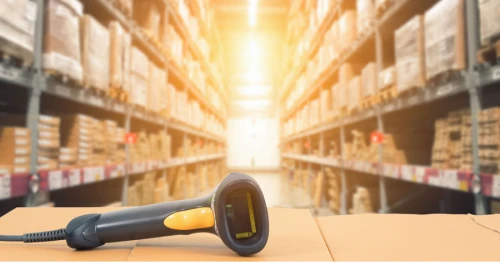eCommerce Cost Guide
Discover the true costs of ecommerce platforms in our free guide.
Success Stories
See how industry leaders succeed with Virto.
Virto & Gladcloud
Boost ecommerce with advanced marketing.









Discover the true costs of ecommerce platforms in our free guide.
See how industry leaders succeed with Virto.
Boost ecommerce with advanced marketing.
Personalization, which has recently become the main trend in B2B ecommerce, plays a crucial role in B2B sales. Changes in customer preferences have caused shifts in B2B marketing. Perhaps no consumer demand is more important than personalization. Your customers expect the same level of personalization they get from B2C giants like Netflix and Amazon. You can achieve this in B2B marketing with customer-oriented marketing. Personalization requires identifying who is on the other side of the screen and understanding their values, aspirations, and triggers.
In this article, we will share our insights on personalization within the B2B sector and discuss some B2B personalization statistics. We will also speak about the ways Virto B2B eCommerce Platform facilitates the implementation of personalized strategies.
B2B customers are guided by factors other than B2C when making a purchase, as the goals are different. While B2C focuses on enjoying the product, B2B focuses on quality, simplicity, and benefit of the product; they value business process optimization and reliability and strive for an effective experience that helps them grow. To satisfy a B2B user and meet all their needs, all processes must be as automated as possible. However, B2B ecommerce trends show that at least 80% of B2B buyers expect a B2C-like experience from their chosen companies. And almost 90% of those B2B companies who tried personalization say that it had a great effect on their results.
For a long time, personalization in B2B meant only individual terms of contracts: volume, price, and deadline. Today, this term has a much broader meaning: for example, the ability to create specialized offers for various clients within the same industry.
Most of the “personalization” options ecommerce platforms offer are actually about simple customization. Customization means only changing the visible part of the system: the users can change colors, fonts, or, going deeper, choose options of the list of ready features.
Personalization is more profound and broader. It actually includes more than simple adjustments: from offering unique conditions to creating separate technical solutions for each client (unfortunately, not all of the modern B2B ecommerce solutions are this flexible.
How do you personalize B2B marketing? Let's imagine you have two clients and both of them are furniture manufacturing companies. One produces tables for offices, and the other – custom-made kitchens. Knowing their specifics, you can offer the first client more favorable conditions for large volumes of wooden materials and the second one – specialized equipment, logistics service, and discount on small-scale wholesale.
A good point here is that by using a big data ecommerce approach: collecting customer data and analyzing them, you can achieve great results in your customer engagement and personalization.
Be prepared that more and more B2B companies will experiment with different technologies of precise targeting and keep your hand on the pulse to keep up with the competition.
What is B2B website personalization? For example, in B2C sales, an automatic offer of similar or related products/services has long been used to select a certain product or service. Also, with B2B commerce, you can proceed in a similar way.
You may offer your customers products based on the goods they are interested in. The recommendation may appear on the page of the product currently being viewed based on goods added to the cart or what was purchased by the user before. Some sellers do this through the section "Customers who bought this product have also purchased...". You can also offer some bundles – for example, if a customer buys a tile, you can offer them tile adhesive. Use what you know about your customers to provide them with the products they are likely to need. All these opportunities to promote cross- and up-sell opportunities in B2B ecommerce will increase the average order value.
Help your B2B customers prioritize content according to the job role, the country of browsing, the type of equipment they use, or their industry. There might be a sidebar on the page of a particular product that offers several additional assets like instructions, product specifications, maintenance tips, video tutorials, and related blog posts – namely anything associated with the product/service that a potential customer may want to explore. Looking for reference B2B website personalization examples is also good idea.
Send personalized emails to B2B customers based on their interests or actions on your B2B marketplace platform. For example, you can send your customers a special offer based on the product page they have viewed or the product they have purchased. You could share a blog post or new video relevant to the customer's industry or the job role of the person who interacts with your company.
Make it designed to interact with customers, answer their questions, and provide them with any assistance they may need to perfect their shopping experience. In fact, this tool of personalization is quite interactive. More often, chatbots are focused on essential customer support, but with artificial intelligence (AI) development, they have turned into personalized recommendations and perform rather complex sales interactions. Chatbots store all information about a specific customer. The contract starts with the client's consent to the processing of personal data. Personalization becomes deeper after each interaction with the chatbot. The bot remembers and analyzes which product/service a person has purchased, which accessory did not fit, and so on. This allows you to increase the number of sales and decrease possible returns drastically.
What is the difference between B2B and B2C personalization? Unlike B2C, B2B personalization operates on two levels. On the one hand, personalization is focused on the specific buyer organization, and on the other hand, it is aimed at the exact end user.
Personalization of interaction in B2B ecommerce implies a uniform but, at the same time, individual approach. Your B2B ecommerce portal should have a simple and clear user interface, offer a convenient, attractive catalog while assisting buyer actions at every stage.
Your B2B customers are consumers like everyone else. They have strong expectations about B2B companies' ability to respond to their needs and personalize the customer experience. By embedding the above 4 ecommerce best practices, you can be confident your key elements in the customer journey have a certain level of personalization and your buyers have an experience that is more aligned with their buying behavior.
So, how can you understand that you are moving the right way, building your personalized customer journey in B2B? Here, we cover some of the most important metric types to watch out for:
Well, we know now how to understand if your efforts are effective. But what are these actions and best practices? Let’s try to find out and look at the B2B personalization examples:
B2B marketing personalization business challenges arise as a natural aspect of the interaction between supplier and customer companies. At Virto Commerce, one of the best B2B ecommerce platforms, we highlight customer offerings, business rules and customer organizational structure as subsets of the personalization business challenges that need to be improved at any B2B ecommerce deal.
For every personalization business idea, you need the tools to implement it. Let's call them technical personalization challenges, and we'll also discuss them in Part 2 of this article. Stay tuned!
Personal offers are about a long-term partnership policy. It is also about attracting new customers, motivating them to make purchases and providing all the necessary support. In this regard, personalization means building business relationships between suppliers and customers. In pre-pandemic practices, salespersons from a supplier and a customer were often familiar with each other as they met before. In today's all-remote world, this communication is replaced by video conferencing.
Further factors in the implementation of B2B ecommerce personalization are business rules, including the parameters of limits, priorities and approval processes.
And the third block of business challenges is a structural representation of a corporate client in the form of the roles of the client's employees and delivery addresses of the products. When working with an organization, you must describe the client organization in terms of its structure, including possible roles of authorized buyers and delivery addresses.
The main business challenges are listed above. It is also necessary to analyze how personalization ideas work for you, how successful the business is, what can be done better in terms of reports, forecasts, A / B tests. For example, you give a 10-20-30% possible discount to some partners, increasing the product sales of your products. So, you need to measure how the discount amount relates to the increase in sales to be maximally profitable for your B2B ecommerce.
In ecommerce, it is important to understand that the order is not placed by a specific person but as an organization. Even the basket and the order belong to the client organization so the organizational structure is more important to the supplier than the personalities of the people who actually clicked the order button.
All in all, personalization deeply depends on your analytics, strategy, and software capabilities. This is why it is essential to choose a B2B ecommerce platform that can enable you to achieve the highest result, even when the market changes. Here are the capabilities Virto Commerce can offer:
With all these capabilities and unlimited growth ability, Virto Commerce can be named the unique solution that can offer literally everything for your customer experience personalization.
While it seems that B2B is mostly about "important decisions" and "boring sales," the need for personalization and CX in B2B grows: people want to work conveniently and fast. If you want to grow your business, now is the perfect moment to start your personalization strategy. And the perfect first step is choosing the software that can help you with this. If you want to learn more about Virto's capabilities and where to start, reach out to our team. If still unsure, read what our customers have made for their B2B clients here.


